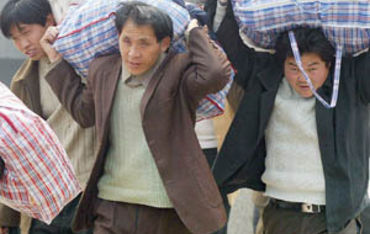
Immigrants Seen Triggering Clashes Along the Volga
Publication: Eurasia Daily Monitor Volume: 11 Issue: 31
By:

The influx of migrant workers from Central Asia and the South Caucasus and of workers from the North Caucasus has triggered clashes in Moscow and other Russian cities, but soon this flow appears likely to spark violence in places far from the Russian capital. According to new Russian analysis, among the first places where this is likely to occur is in the cities, Russian and non-Russian, along the Volga River.
Historian Dmitry Krivtsov says that migration flows in that region have many of the characteristics of such developments elsewhere. But he stresses that they also have their own “specific” features. Some of the cities there, like Astrakhan and Volgograd, are more affected by an influx of workers from the North Caucasus. And others, like Samara, Nizhny Novgorod and Kazan, are more affected by the arrival of people from Central Asia. These cities stand out in another way too: While they are attracting new workers because of their industrial base, the other cities in the region are losing populations because of the decline or even collapse of local employers. Few in the latter category are attracting any guest workers from outside the region, but some of them are seeing the arrival of businessmen from the South Caucasus. Each of these flows has its own specific impact on the situation in the region (apn.ru/publications/article31063.htm).
Krivtsov also calls attention to the way in which migration flows are making the predominantly ethnic-Russian regions of this part of the Russian Federation more Russian, with an admixture of immigrants from the Caucasus and Central Asia while such flows are making the non-Russian republics more non-Russian, a pattern that is recapitulating what happened at the end of the Soviet period. Russian oblasts are attracting Russians from surrounding non-Russian areas but not enough to replace the departure of Russians from them. As a result, immigrants from Central Asia are making up the difference.
The non-Russian republics in contrast are attracting their co-ethnics from beyond their borders, with “the Chuvash going to Chuvasia, the Udmurts to Udmurtia and the Bashkirs to Bashkortostan.” Such flows allow the titular nationality to preserve or even enhance its presence, Krivtsov says, and they limit but do not eliminate the influx of guest workers from Central Asia or the Caucasus.
For the present, the analyst continues, one cannot call the situation “critical.” If the government were to pursue a more “literate” policy, these processes could be reversed or managed. And for the present, he says, “they are not leading to a catastrophic degradation in the demographic and social-economic plane. But in the future [if policies are not changed] such degradation will become inevitable.”
In three cities, Nizhny Novgorod, Kazan and Samara, the influx of immigrants has changed the social situation. Three to five years ago, there were few guest workers, or at least, they did not attract much attention. Now, however, they are sufficiently numerous to form their own communities, something longtime residents are increasingly nervous about.
One interesting aspect of this is that the new immigrants are displacing older minority groups. In Nizhny, for example, the Roma who had lived there for decades are leaving and selling their apartments and houses to new Central Asian immigrants. That has affected ethnic relations because the Russians had learned how to deal with the Roma but say that they do not “understand” the Central Asians who often do not speak Russian and do not adapt to local conditions.
Another aspect worthy of attention, Krivtsov says, is the influx of ethnic Azerbaijanis from Dagestan and Armenia. Unlike the Uzbek and Tajik guest workers, these people are businessmen rather than unskilled laborers and are more likely to settle in smaller cities and towns where they often take over entire sectors of the economy, such as timber and wood processing. Such people, the analyst continues, “are more adapted to local conditions, know Russian and the rules and habits” of the locality. They thus do not generate the same kind of “negative reaction” that guest laborers do. Instead, they are a source of tension because they often have the most corrupt relationship with the local authorities and because they keep their workers in a state of virtual “slavery.” As a result, class tensions reinforce ethnic ones.
If the Volga River valley is to avoid ethnic explosions brought on by the influx of outsiders, Krivtsov argues, Russia will have to develop a “normal” economy rather than continue to rely on natural resource exports. If the country made that change, he says, the need for unskilled guest workers would fall away. In the meantime, he suggests, Moscow must impose a visa regime on people from Central Asia and the Caucasus, limit money transfers, and tighten security at its borders. Whether Moscow can or will do all these things remains to be seen.




